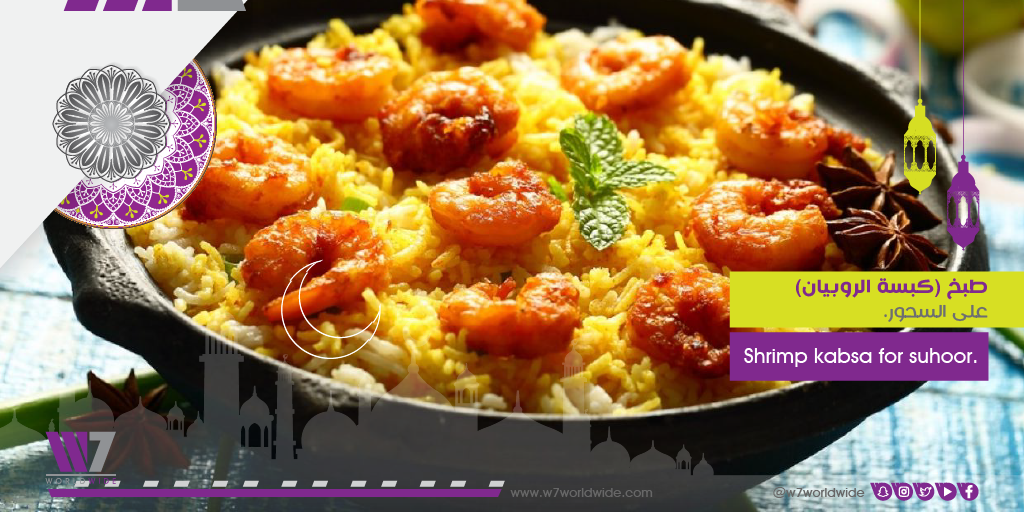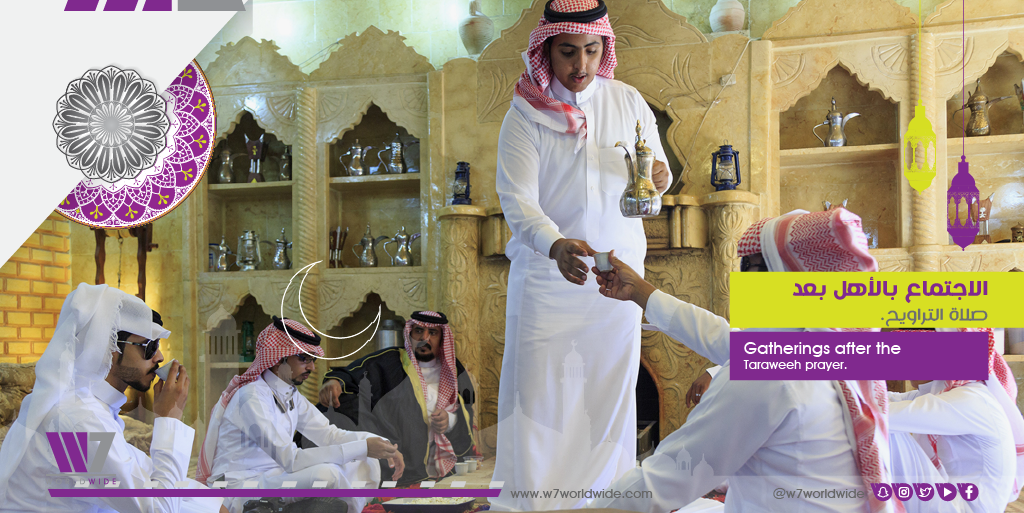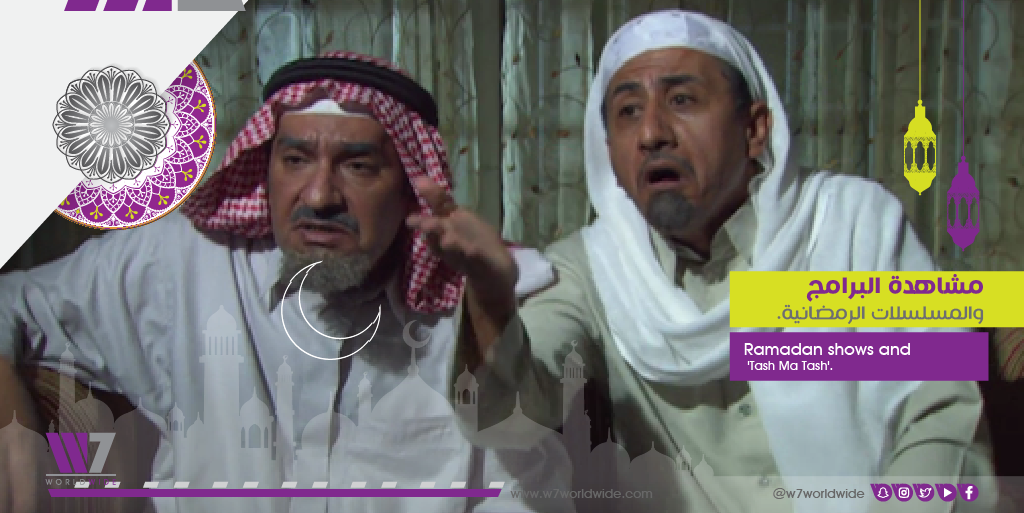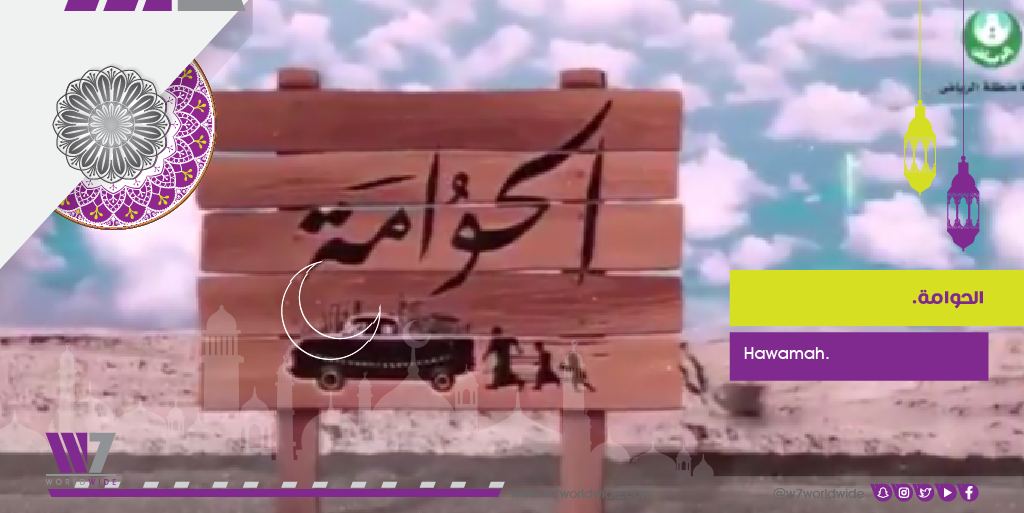In Ramadan, when the call to prayer (adhan) at sunset rings out across Najd, the central region of Saudi Arabia, you will experience a sense of spiritual consciousness unlike anything you have experienced before. This is the unique flavor of the Najdi Ramadan. Not many people realize that the adhan is a form of social communication, originating from one person and reaching several others, inviting them for prayer.
People in Najd celebrate Ramadan in traditional ways, some of which are similar to practices in the other regions of the Kingdom, while others are relatively new and appeal mostly to the younger generations.
In this blog, we explore the famous Ramadan traditions of Najd and for this purpose, we asked our friends in the region to shed some light on their favorite things to do in the blessed month. Here’s what they had to say:
1) We enjoy a traditional shrimp kabsa for suhoor
Najd is known for its delectable cuisine. The purpose of the Ramadan suhoor (pre-dawn meal) is to energize and nourish the body before starting the fast. Shrimp kabsa is one such non-traditional delicacy that brings Najdi families together at the suhoor table during this month of bonding and connecting.

2) We gather after Taraweeh prayer
Just like in other parts of the Kingdom, families and friends in Najd get together after the Taraweeh prayers to spend some quality time with each other. Sadly, we are missing these gatherings this year due to the ongoing pandemic situation. However, life goes on and here’s hoping these post-Taraweeh traditional gatherings won’t be missed for too long in the coming years.

3) Lectures & Quran recitations
Ramadan is the month of piety and forgiveness. It is also the month of the holy Qur’an. Oftentimes we forget this in the mad rush of fasting and feasting. Many families and neighborhood mosques have established a tradition of sitting together for Qur’an recitation sessions post iftar (evening meal). Through these gatherings, people help the needy with zakat donations, which is a religious obligation. The tradition has been adopted by the Saudi government, which now organizes Ramadan lessons and lectures and has set up official channels for zakat distribution.

4) We love watching Ramadan shows
During Ramadan, television channels compete with each other to air special series and soaps to entertain viewers in the Arab world. “Tash Ma Tash,” a popular Saudi satirical comedy show famous for its parody of local customs and traditions, is a classic favorite of many in the region. Year after year, families gather around their television sets to watch the show, which explores the Saudi lifestyle, including Najdi traditions and attire.

5) Shopping at the Hilla Market
The Hilla Market is a traditional open market in Riyadh that provides a unique Ramadan experience. It is famous for a variety of traditional Saudi cuisines. Apart from recreation and shopping fun, these special Ramadan bazaars also offer a platform for donating clothes and food throughout the holy month.

6) Mass iftars
The historical town of Diriyah is famous for its well-lit mosques, where mass iftar meals are served during Ramadan, providing an opportunity for people to socialize and interact with each other. This tradition of breaking the fast at mosques is seen across the region.

7) Hawamah
Hawamah is a Najdi celebration, where children dressed in traditional costumes go door-to-door in the neighborhood, sing special Hawamah songs, greet the neighbors and receive candy from them. The festive celebration is also an example of social communication. Even though the older generations do not celebrate Hawamah, the practice is popular among the younger generations. It is similar to “Gargee’an,” which is celebrated in Sharqiyah mid-Ramadan.
While the Hawamah celebrations will not take place this year due to COVID-19, social communications are bound to adapt to the current situation and continue via other means and channels.



